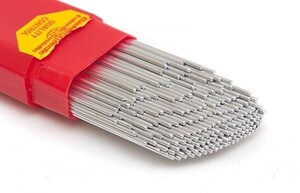Aluminum soldering
Various brazing materials, especially zinc alloys, are used for brazing aluminum and its alloys and, to a lesser extent, steel and zinc. The operating temperatures for brazing aluminum and its alloys are around 450 °C. Aluminum brazing alloys generally have a melting temperature of around 388 °C. A heat source with a propane gas torch can be used for this brazing process.
Castolin Eutectic soldering products for aluminum soldering offer you high performance and reliability for precise joints. Our brazing wires in various alloys are optimized for aluminium brazing and offer excellent flowability and outstanding durability for a secure and long-lasting joint. With our extensive range of soldering accessories, including flux and soldering iron tips, you can successfully complete even the most challenging soldering projects.
In aluminum brazing, aluminum and aluminum alloys are joined with special brazing materials developed specifically for this metal. Brazing aluminum can be difficult due to its high thermal conductivity and the formation of oxide layers that prevent wetting and bonding. However, with the use of suitable aluminum solders and the correct technique, successful soldering of aluminum can be achieved.
Aluminum solders usually consist of various alloys containing a combination of metals such as tin, zinc, copper and silicon. These alloys are formulated to have a lower melting point than aluminum, which facilitates the brazing process.
Surface preparation: Successful soldering of aluminum requires good surface preparation. Aluminum surfaces should be thoroughly cleaned to remove all oxide layers, dirt and contaminants. Abrasive methods such as brushing or grinding are commonly used to clean the surfaces and improve the adhesion of the brazing alloy. In addition, some aluminum solders require special pretreatment or the use of flux before the solder is applied.
Brazing techniques: When brazing aluminum, it is important to heat the aluminum surfaces evenly to avoid deformation and ensure a good bond. Direct contact methods, such as soldering irons or soldering torches, are commonly used. Indirect methods, such as infrared soldering, can also be used to heat the aluminum surfaces. The appropriate brazing technique depends on the application and the equipment available.
Considerations after brazing: After brazing aluminum, it is important to inspect the brazed joints for quality and integrity. Excess solder or irregularities should be carefully removed and the soldered components should be allowed to cool naturally to avoid thermal stresses.
Brazing aluminum requires careful selection of the brazing alloy, adequate surface preparation and a suitable flux. It is important to follow the manufacturer's recommendations and specific soldering guidelines to obtain reliable and durable aluminum solder joints. Always take proper safety precautions when working with brazing materials, including adequate ventilation and the use of appropriate personal protective equipment.

